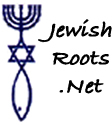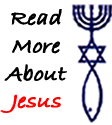






![]()
The Water Libation Ceremony, known as Nissuch Ha-Mayim in Hebrew, was one of the most popular parts of the celebration of the Feast of Tabernacles. This ceremony followed the daily sacrifices. It is no longer practiced today but it was being practiced during the Second Temple era and during the time of Jesus Christ. Jesus used this ceremony to make a bold statement.
One reason the water libation ritual was so popular in Second Temple days was the accompanying ceremony of the water drawing, which took place at night when water was drawn from Siloam for the next morning's water libation. Each day for seven consecutive days a priest would walk up a ramp leading to the bronze altar located in the Temple Court and pour a jug full of water into a bowl that drained into the altar.
The ceremony of the water drawing was a jubilant occasion. The Mishna states, "He that has never seen the joy of the [ceremony of the water drawing] has never in his life seen joy." (Sukkah 51a) As the ceremony took place, Levite's played lyres, trumpets, harps, cymbals, and other instruments, while other Levite's sang. In the Temple area, three golden candlesticks nearly 75 feet high were lit by young boys climbing tall ladders, and the light from these candlesticks could be seen throughout all Jerusalem. Respected men of faith danced and sang in front of these candlesticks while carrying burning torches. As the ceremony progressed through the night, the priest blew the shofar three times. In the manner of the text of Isaiah 12:3, "Therefore, with joy shall ye draw water out of the wells of salvation," the evening was characterized by exuberant joy. It was a wonderful occasion that no one wanted to miss.(1)
Sometimes Rabbis would perform acrobats and juggle flaming touches as part of the festivities.(2)
Some interpreted the passage in Deuteronomy 14:26 to mean it was good to spend one's tithe money on food or liquor or whatever delicacies one might desire for the purpose of eating and rejoicing in the presence of the Lord.(2)
It is important to know something about this water. It was taken from a spring just east of Jerusalem called the Spring of Gihon. This spring may have been used to anoint David's son, Solomon, King of Israel (1 Kings 1:45). King Hezekiah later redirected the water of this spring into the city of Jerusalem through a long underground conduit known as Hezekiah's Tunnel. Within the walls of Jerusalem, the waters of Gihon ran into a pool named the Pool of Siloam.
Waters from the pool of Siloam were used in the ordinance of the red heifer described in Numbers 19, where Moses was instructed to mix "running" (lit. living ) water with the ashes of the red heifer. The water had to be fresh, able to give life, not stagnant. This mixture of water and ashes was sprinkled on those who had become unclean to purify them. This same Pool of Siloam is also referred to in the New Testament.
It was to this pool that the Lord Jesus sent a man, blind from birth, to wash off the clay that He had applied to the man's eyes. After washing in the pool, the man received his sight (John 9:6-7).
The Pool of Siloam not only held historical significance, but in Jewish tradition it also had a prophetic connotation. First, the Jewish Scriptures speak of a time when, like water poured "upon him that is thirsty, and floods upon the dry ground," God will pour out His Spirit upon all flesh (Isaiah 44:3). Because the waters of Siloam were used to anoint the kings of the house of David, and that anointing was symbolic of the Holy Spirit coming upon an individual (1 Sam. 16:13), the living waters of Siloam became associated with the outpouring of the Holy Spirit.
Second, this outpouring is to take place during the days of the Messiah, the anointed one, a descendant of King David, through whom salvation will come to Israel. Based on Isaiah 12:3, the Pool of Siloam became known as the "well of salvation" and was associated with the messianic age. Thus, to the Jewish people of the Second Temple days, pouring water on the altar at the Feast of Tabernacles was symbolic of the Holy Spirit poured out during the days of the Messiah.
This custom became a controversial issue between the Sadducees and the Pharisees. When Alexander Jannai, who was both king and high priest and a follower of the Sadducees, publicly refused to pour the water on the altar, the congregation became so enraged that it pelted him with etrogim (fruit) (Sukkah 48b, Antiquities 13.13) In the aftermath of this incident, he is said to have massacred more than 6,000 of his fellow Jews.(3) This occurred approximately 95B.C.
 Messiah In The Water Libation Ceremony:
Messiah In The Water Libation Ceremony:Finally, on what was probably the last day of the feast known as Hoshana Raba,(May have occurred one day later on Shemini Atzeret) the climax of the entire week, Jesus made what some believe to be His greatest proclamation.
On the last and greatest day of the Feast, Jesus stood and said in a loud voice, "If anyone is thirsty, let him come to me and drink. Whoever believes in me, as the Scripture has said, streams of living water will flow from within him."(John 7:37-38)
This was no statement secretly whispered in the dark corner. The text says that Jesus "stood" to make His announcement, and He "cried" meaning He spoke with a loud voice. He wanted everyone to hear the good news. The stunned crowd did hear and they knew what He meant.
Jesus was declaring that He was Messiah and that everyone who would believe in Him would receive the gift or indwelling of the Holy Spirit, the "living water," not measured in terms of a trickling spring, the Spring of Gihon, but a flowing river-even numerous rivers!(1)
Jesus was saying in effect "I am the reality that the water in this ceremony symbolizes-the true life giver through whom the Holy Spirit is also given."(4)
Some may have also been familiar with Ezekiel's prophecy of the Holy Spirit (Ezek. 36:24-27).
Even though this ceremony is not practiced today because there is no temple, the liturgy can still be found in some Jewish prayer books. One prayer said during the Sukkot holiday reads
"Please God! Those who pour water before you, from the springs of salvation may they draw water, save now and bring salvation now.(5)
Read more about the holiday of The Feast Of Tabernacles.
1). This information came from The Feast of Israel a book written by Bruce Scott who is a Friends of Israel Ministries representative.
2). Messiah Magazine # 87 Published through First Fruits of Zion, Devarim 5765 (2005).
3). Information from The Biblical And Historical Background Of The Jewish Holy Days by Abraham P. Bloch is copyrighted material and was used with permission of the publisher. KTAV Publishing, 900 Jefferson Street. Box 6249, Hoboken, NJ 07030-0102
4). Jewish Voice Today, September/October 2005 by Guest author Mitch Glaser, President of Chosen People Ministries.
5). The Complete ArtScroll Siddur published by Mesorah Publications, Ltd.P.745.